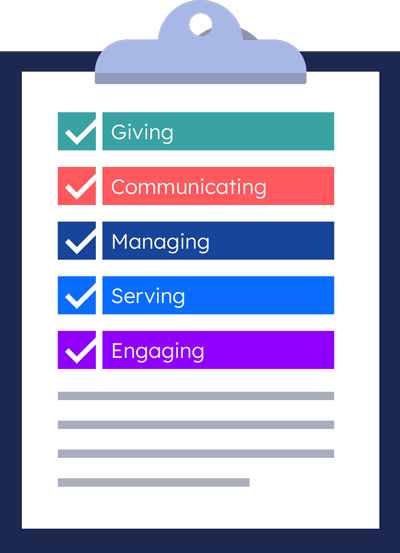
Many churches have attempted to deal with capacity issues by taking their church to two services. Sometimes the second services are a raging success, but too often churches end up going back to one service vowing never to attempt that again.

Many churches have attempted to deal with capacity issues by taking their church to two services. Sometimes the second services are a raging success, but too often churches end up going back to one service vowing never to attempt that again.
This proprietary online assessment helps churches understand how they rank in regards to what tech they use and how they use it.

If you’re thinking about starting a second service, we’ve put together six tips that will put the odds in your favor. And if your past attempts at a second service weren’t successful, don’t lose hope. You’ll probably find one or two tips here that can set you up for a successful relaunch.
Have you ever walked into a movie theater and it was so crowded that you just wanted to walk out? There might be plenty of available seats, but figuring out which ones aren’t taken, pushing by people who are already comfortable, and then sitting by a stranger feels a little overwhelming.
The same emotional response happens to visitors when churches get too full. The consensus used to be that once you hit about 80 percent capacity, it was time to start considering a second service. But people demand a little more personal space today, and many suggest that 70 percent capacity is a better target.
This will probably come as no surprise, but people tend to struggle with change. Even if you could pull off launching a new service in a couple of months, it would still be wise to plan for 8–12 months. You want to make sure that people are on board and understand how the transition will work.
You want to use every communication channel at your disposal to talk about the change: Announcements, emails, social media, websites, and your church app. Talk about it until you feel you’re addressing it too much—and then talk about it some more. Lay out expectations and address concerns. Over-communicating will help prepare your people emotionally for the change.
One significant concern for many churches is how they’re going to pull off all of the ministry needs of a second service. As it stands, they’re probably already struggling to meet all the demands of one service.
Believe it or not, a second service can make finding volunteers easier. Sometimes it’s challenging to get people to serve because they don’t want to continually miss out on services. If you present the two services as an answer to the problem, many will attend one service and serve at the other. The attend-one/serve-one model can be a helpful way to give your new service a higher chance of getting off the ground.
Many people struggle with the idea of moving to two services because they fear losing contact with people they see every Sunday. It’s a legitimate concern and a sign that those church relationships are essential—and that’s a good thing. Hopefully, there are opportunities like small groups or Bible studies where people can connect. But it’s also smart to provide a little time between the two services.
When churches don’t put adequate time between services, they end up rushing people out after church to ensure there’s enough parking for the next service. And that doesn’t send the right signal to visitors.
Timing is everything. Sometimes second services don’t take off because they were launched at the wrong time of the year. Most churches already struggle with a summer slump. Trying to kick off a second service when many from your congregation are taking vacations can be disastrous.
You’re probably going to have a more favorable result when launching September–November or February–April. Whenever you choose to initiate your second service, make sure it’s during a time when your attendance is highest.
Let’s say that your current service starts at 11:00 AM. You could launch a service for 9:00 AM without much hassle. But given the opportunity, most people won’t give up the routine they’re comfortable with to change to something brand new. This is why it’s probably a good idea to set a new service time for the existing service—even if it’s just a 15-minute change.
Instead of starting a 9:00 AM service, why not kick-off with a 9:30 service and move your existing service to 11:15? This way, everyone has to make adjustments to facilitate the new service.
Adding a second service is one of the easiest ways to manage your space and prepare for growth, but it can be scary. Plan on giving it a good six months to get off the ground. If it doesn’t take the first time, you haven’t failed. Pull your service back together and audit the areas of struggle. Once you’re ready to tweak the areas that gave you the most trouble, give it another shot.
Your staff is going to be invaluable when launching a new service. But if you’re hiring around this time or to help out with this growth, be sure to hire the right people—leaders who will help nurture sustainable growth at your church.
This proprietary online assessment helps churches understand how they rank in regards to what tech they use and how they use it.



